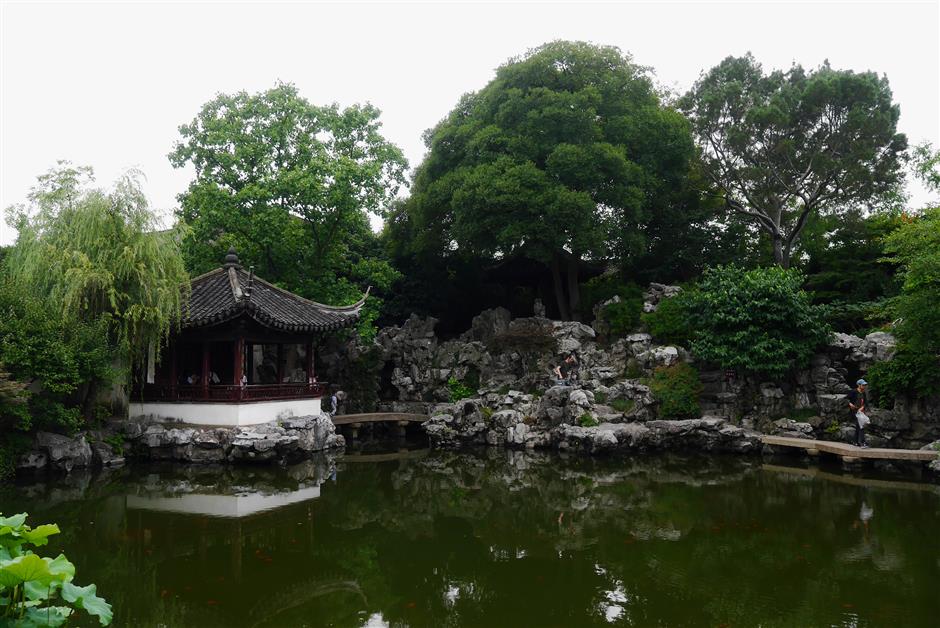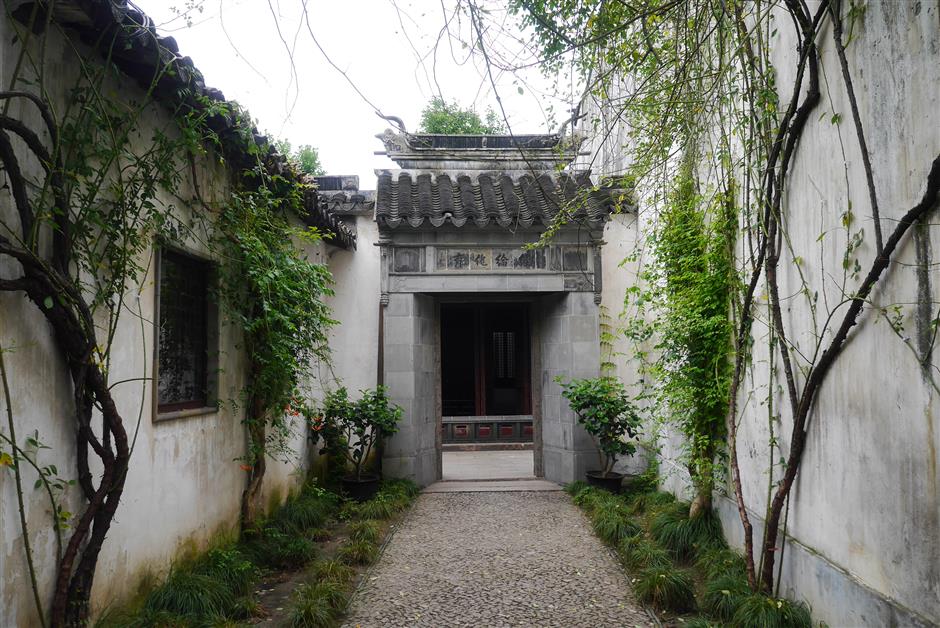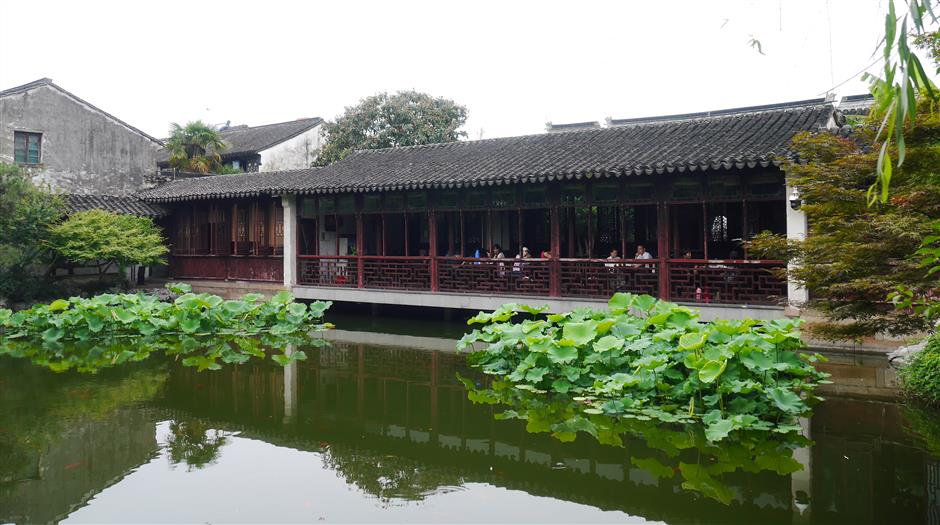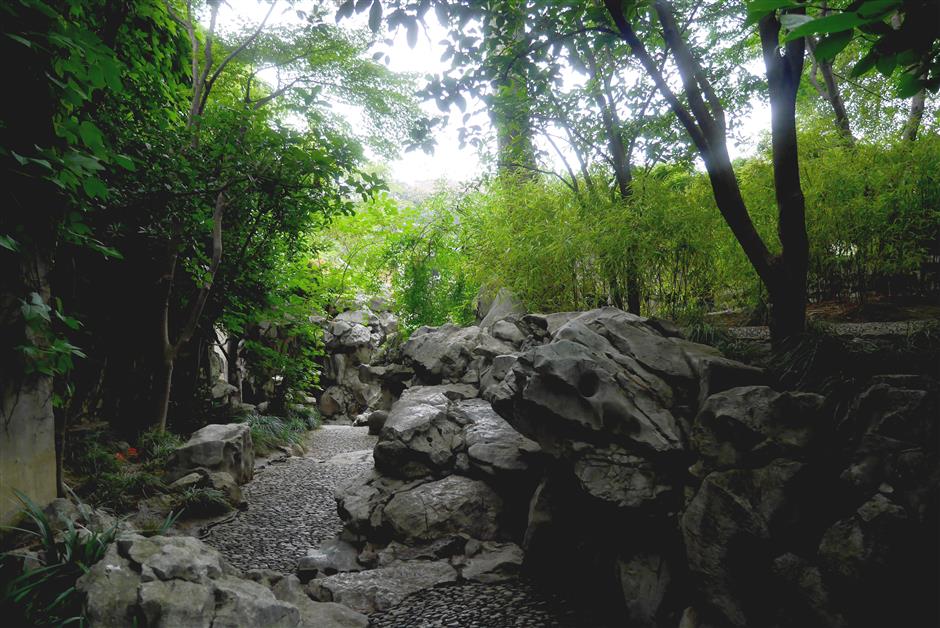In the city of celebrated gardens, a hidden, intimate discovery

Pavilions and rockeries are two essential elements in Chinese classic gardens.
Suzhou is a bit of old hat as a tourist destination. Visiting the city’s famed classical Chinese gardens is commonly on every to-do list for travelers in this region of China.
But it’s not quite all “been there, done that.” Even a well-trod tourist haunt like Suzhou can cough up surprises.
And so it was on my recent visit to the city.
The surprise was Yipu Garden, a place not easy to find but well worth the search. After failing to find a cab on a hot summer morning, I trudged to the garden on foot after getting off the subway.
I walked down a street packed with crayfish restaurants before turning into a narrow lane flanked by traditional Suzhou-style houses ─ whitewashed walls, dark tiles and distinctive roofs.
I thought the map I had was leading me astray because all I could see was a lane bustling with daily life. Laundry hanging above me. Old folks sitting outdoors, chatting and nibbling on snacks. Small ads for locksmiths pasted on poles.
I asked one older woman, “Is a place called Yipu around here?” She pouted and nodded her head in a general direction. I followed the pout and came across a small black gate.
Chinese characters inscribed on a board above the gate told me I had found the garden.
Walking through the gate felt a bit like entering the closet in “Narnia.” Suddenly, the hustle and bustle of the lane outside ceased. Everything was quiet. In front me, a pathway wound between two high walls, with lush shrubbery peeking out from behind them. I wondered what was behind the walls.

Long walkways compose the labyrinth-like structure of the garden.
The garden that opens up at the end of the pathway is small and intimate. It is in the typical Ming Dynasty (1368-1644) style, featuring a lake, rockeries, bonsai, pavilions, trees and flowers.
From every angle and from every window in the buildings, the views are very pleasant. The site is so low profile that no people from outside could peek inside from behind the walls.
It might be historical happenstance that all the past owners of Yipu were officials too righteous to carry on with careers in governments they considered corrupt.
The garden was originally called Zuiyin Hall, built by a man named Yuan Zugeng (1519-90). He quit his job as a government official and returned home at the age of 40, choosing to live like a hermit. His decision provoked quite a controversy at the time.
The hall was later sold to Wen Zhenmeng (1574-1636) in 1620. He was an official during the reign of the last Ming emperor. Wen repaired the garden and renamed it Yaopu. In 1636, he, too, got fed up with government corruption, resigned his post and settled in the garden. His retreat was short-lived. He died later that same year.

The riverside pavilion at Yipu Garden has been modified into a teahouse.

Donglai Thatched Cottage was where the former owners received guests.
Yaopu was subsequently abandoned, becoming nothing more than ruins. Jiang Cai (1607-77), a native of Shandong Province and another Ming court official, took over possession of the garden. Jiang was demoted at court for being too forthright for the emperor’s taste, but before he could assume the lesser post, the Ming Dynasty collapsed.
Although Jiang had his differences with the imperial court, he and his family remained patriots. As Tatars took over control of the government, Jiang and his son Jiang Shijie mourned the death of the dynasty by naming various structures in the garden to commemorate the Ming line and by changing the name of the garden to Yipu.
In Mandarin, the character ming is comprised of the character ri, meaning “the sun,” and yue, meaning “the moon.” In the garden, some of the buildings had names that contained the radicals of ri and yue, such as the Yanggu Study and Xiangyue Corridor.
Despite its illustrious, somewhat checkered past, the garden nowadays is a cheerful, hidden treasure. Local elderly sit there to enjoy afternoon tea, and newlyweds pose for photos.
Sitting at a window in a pavilion, with a pot of green tea, I looked out onto a small pond where lotus were about to burst into bloom.
On the other side of the pond, a couple was listening to the instruction of a photographer on how to strike poses for their wedding pictures. They were both clad in the traditional clothing of a century ago in keeping with the background.
I could imagine what their wedding photos would look like in years to come. They would show small pavilions, cerulean pond water and grotesque rock shapes taken from different angles. The smiles of the bride and groom would probably warm the hearts of their children and grandchildren some day.
I think the former owners would be happy, too, if they could see that a spot they so cherished would bring such joy to later generations of people.

If you go:
It takes about 25 minutes by high-speed train from Shanghai to Suzhou. Once there, take Metro Line 1 to the Yangyu Alley Station, then walk along Xueshi Street and Wuqufang, turning left onto Baolinsi Street. Yipu Garden is in an alleyway on the right side. Alternately, you may take bus lines 33, 88, 262, 301 or 313 and get off at the Children's Hospital stop. Walk along Jinde Road, turn right onto Wuqufang and then left on Baolinsi Street.















